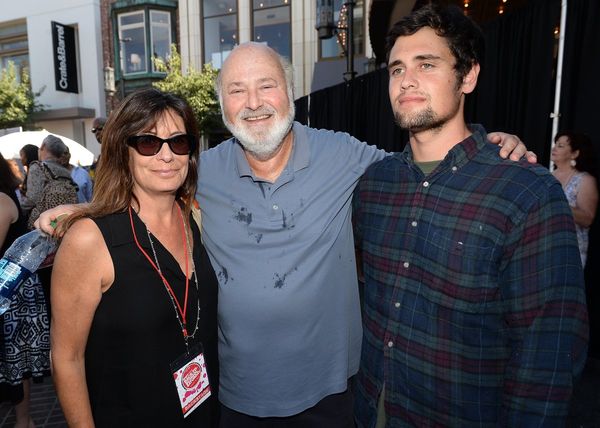
- Walmart’s first refreshed logo in 17 years bears strong resemblance to founder Sam Walton’s beloved trucker-style cap. Walton, who led the retailer from 1962 to 1988, espoused 10 guiding principles in business.
Walmart founder Sam Walton died more than 30 years ago, but his influence is still felt at his Bentonville, Ark.-based retailer.
The company unveiled its first logo refresh in 17 years, slightly widening the “Walmart” lettering and plumping the stems of its yellow star graphic. The modernization of the logo is representative of the retailer’s expansion into e-commerce and honing of cheap-chic offerings for which rival Target was once known.

The updated logo also pays homage to the past. It bears a strong resemblance to the one adorning the ballcap Walton was known for wearing, including on the cover of his 1992 autobiography, Made in America.
“While the look and feel of our brand is fresher, more contemporary, and more future-focused, our [logo] reflects our enduring commitment to Sam’s principles,” a Walmart spokesperson told Fortune in a statement.

Though Walton retired as CEO of Walmart in 1988, the retailer’s success has ballooned in the years since. Walton was dubbed the United States’ richest man in 1985 by Forbes, and the Waltons still hold the title of the country’s wealthiest family with a net worth of $267 billion. When the Fortune 500 began including service companies on its list, expanding beyond its criterion of industrial companies, Walmart debuted at No. 4 and has held the top or runner-up spot every year in the 21st century, including being ranked No. 1 for the past 11 years. Today, Walmart has a market cap of $736 billion.
Walton built his company on a business blueprint of 10 rules, which he outlined in Made in America. Here are three of those key principles.
Motivate partners beyond money
Many of Walton’s rules for business have to do with disrupting the status quo, including setting lofty goals and outside-the-box solutions for employees to meet. That means encouraging workplace competition and shaking up company silos, not just incentivizing workers with promises of ownership or payouts.
“If things get stale, cross-pollinate; have managers switch jobs with one another to stay challenged,” Walton said of the strategy in Walmart’s Digital Museum. “Keep everybody guessing as to what your next trick is going to be. Don’t become too predictable.”
Walton exhibited his maverick attitude before even opening the door to his first Walmart store in 1962. Prior to starting his own company, Walton trained at industrial supply chain Butler Brothers in Arkadelphia, Ark., with the plan to franchise a Butler-owned Ben Franklin five-and-dime store. Walton also frequently peeked into the Sterling Store across the street from his prospective Ben Franklin location to look at their displays and pricing. When it came time for Walton to open his franchise location, he found cheaper suppliers than the Butler Brothers and, realizing customers wanted fair prices above all else, sold his products at a discounted rate.
“First he learned all the rules,” Harvard Business School professor Richard S. Tedlow wrote in his 2001 book Giants of Enterprise: Seven Business Innovators and the Empires They Built. “Then he broke all the rules which did not make sense to him—which meant almost all of them.”
Exceed customer expectations
Walton also adopted a customer-is-always-right attitude encouraging employee accountability.
“Give them what they want—and a little more,” he said. “Let them know you appreciate them. Make good on all your mistakes, and don’t make excuses—apologize. Stand behind everything you do.”
Walmart has appeared to continue to successfully abide by this piece of advice. Over the past year, the retailer has not only succeeded in retaining low-income customers looking for deals, but has also attracted relatively high-income consumers earning more than $100,000 annually because of its delivery options and better-for-you-branded private-label foods.
“The two most important words I ever wrote were on that first Wal-Mart sign: ‘Satisfaction Guaranteed,’” Walton said. “They’re still up there, and they have made all the difference.”
Swim upstream
Walton’s unconventional means of motivating employees extended to his business decisions. If competition was going to zig, Walton would zag.
“Sam Walton did not become a billionaire because he was a genius (although he was without question smart, shrewd, and astute),” Tedlow wrote in his book. “The real explanation for his success was that he had the courage of his convictions.”
Walmart has maintained an edge over Amazon for this reason. The discount retailer, in addition to maintaining brick-and-mortar stores, has continued to expand e-commerce and delivery offerings, optimizing its omnichannel retail strategy. A 2024 working paper estimated that retailers’ pushes toward omnichannel could claim $100 billion worth of market share from Amazon.
“Ignore the conventional wisdom,” Walton said. “If everybody else is doing it one way, there’s a good chance you can find your niche by going in exactly the opposite direction.”







